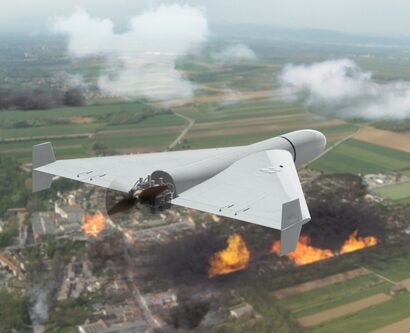Abstract: Since the early twenty-first century, outer space has evolved into a congested and contested environment, as the proliferation of state and commercial actors has embedded orbital infrastructures into global security and economic systems. Historically framed through analogies with air and maritime power, space has consistently been regarded as a strategic domain central to terrestrial influence. The Russian invasion of Ukraine in 2022 accelerated this trajectory, exposing both the fragility of orbital assets and the critical role of commercial providers in sustaining resilience. These developments compelled the United States to reassess its deterrence architecture, shifting from reliance on a few exquisite systems to resilient, distributed constellations. In doing so, Washington has increasingly leveraged its advanced commercial ecosystem, integrating private actors as essential components of national security and power projection.
Problem statement: How has the war in Ukraine accelerated the evolution of space as a strategic domain?
So what?: The U.S. experience in Ukraine demonstrates that the sustainability of space deterrence depends on embedding commercial infrastructures within a coherent strategic architecture. This implies investing in resilience and redundancy and reassessing the conceptual boundaries between state and private actors in the constitution of space power.

Source: shutterstock.com/greenbutterfly
Space As A Strategic Domain
As strategic competition for control of orbital space intensifies, Earth’s most congested satellite corridors are increasingly central to terrestrial power projection. Today, space power is widely recognised as a prerequisite for and a decisive enabler of influence on Earth.[1] Historically, however, outer space served as a symbolic arena for demonstrating technological leadership and prestige.[2] Achievements in space—satellite launches, human spaceflight, planetary exploration—were valued more for reinforcing national status in the international system than as operational necessities. The end of the Cold War catalysed a major shift. With national space programs liberated from bipolar logic, a broadening set of state actors entered the space domain. At the turn of the twenty-first century, commercialisation further accelerated this trend: private sector involvement drove down costs and democratized access to space.[3] As of 2025, over 70 government space agencies are operating worldwide.[4] Moreover, approximately 100 countries or multinational organisations operate satellites in orbit or hold space-based assets, covering functions from telecommunications and navigation to meteorology and reconnaissance.
Today, space power is widely recognised as a prerequisite for and a decisive enabler of influence on Earth.
With the increased diversification of space actors, the progressive embedding of orbital infrastructures into global communications, navigation, financial systems, and critical supply chains has transformed space from a technical enabler into a central pillar of the global system.[5] As societies and militaries have become dependent on uninterrupted access to satellite-based services, orbital space has been elevated to a contested environment where disruption carries systemic consequences.[6] The institutionalisation of this reality is evident in the proliferation of dedicated military and governmental bodies tasked with space operations: the establishment of the U.S. Space Force in 2019, the French Commandement de l’Espace in 2019, the United Kingdom’s Space Command in 2021, the German Space Command in 2022, and Japan’s Space Operations Squadron in 2020 all testify to the recognition of outer space as an operational domain central to strategic autonomy and national security.[7]
This evolution highlights that space is no longer a passive or supportive environment, but an arena where the control and protection of orbital infrastructures underpin the possibility of projecting power both during peace and wartime.[8] Satellite constellations now provide real-time intelligence, surveillance, and reconnaissance (ISR), global navigation and timing, precision targeting, secure communications, and the coordination of dispersed coalitions. Orbital geography thus constitutes a form of strategic high ground whose preservation—or disruption—can decisively influence terrestrial dynamics.
In this context, space power has become firmly entrenched as a pillar of national power, shaping not only military readiness but also economic resilience, diplomatic leverage, and technological leadership.[9] This is reflected in resource allocation: in 2023, the United States accounted for more than 60% of global government space expenditure, with defence-related programs representing roughly 85% of its national budget. The People’s Republic of China allocated $14.5 billion to space activities, supported by more than 60 launches. At the same time, despite economic strain, Russia continues to devote a disproportionately high share of its space expenditure budget to military and dual-use systems,[10] with estimates suggesting that these programs account for around 40–50 per cent of total space spending.[11]
Strategic Theory in Outer Space
Strategic analysis of outer space has often relied on analogies with existing domains to capture its novelty. The earliest was the airpower analogy, treating space as a higher altitude and stressing vantage point and vertical escalation. Yet this framework quickly reached its limits: unlike aircraft, satellites move along fixed orbital paths dictated by celestial mechanics, cannot manoeuvre freely, and operate in an environment where permanence and predictability matter more than speed or altitude.[12]
Satellites move along fixed orbital paths dictated by celestial mechanics, cannot manoeuvre freely, and operate in an environment where permanence and predictability matter more than speed or altitude.
More sophisticated insights come from the maritime tradition. Here, it is essential to distinguish between naval and maritime. The naval lens focuses on fleets and the projection of force at sea, while the maritime lens encompasses the broader web of trade, communications, and logistics sustained by the oceans. It is the latter perspective that resonates most strongly with outer space. As maritime powers historically derived influence from controlling sea lines of communication and sustaining overseas infrastructures, spacefaring states today rely on orbital slots, frequency allocations, launch corridors, and ground station networks.[13] Each of these elements functions as strategic infrastructure: satellites enable the flow of data much as ships enable the flow of goods, launch sites mirror the role of ports, and dispersed ground stations resemble a network of coaling stations or relay hubs that extend operational reach across the globe. Some theorists extend this view by likening the orbital environment to a celestial littoral, where activity remains concentrated in low-Earth and geostationary orbits rather than in the uncharted expanse of deep space.[14]
These parallels are analytically valid but not sufficient. Outer space possesses distinctive features that prevent any simple transfer of concepts from sea or air. Maritime chokepoints such as the Suez or Malacca are geographically fixed and can be physically contested; orbital “lines of communication,” by contrast, are intangible, shaped by orbital mechanics and electromagnetic spectra, and can be disrupted but not occupied. Whereas the seas sustain human presence and allow concealment, alternative routes, and the exploitation of resources, space remains a hostile, uninhabitable environment, with movement confined to predictable trajectories and activity mediated entirely through technology. Airpower offers only a partial comparison: aircraft operate in a fluid medium, enjoy manoeuvrability, and can evade detection, while satellites are locked into transparent and highly traceable orbits.
Taken together, these comparisons perform a dual function. They demonstrate, first, that outer space constitutes a domain, with its own logic of access, control, and infrastructure. Second, they indicate that this domain, although unique, is inseparably embedded within the global system: the same dynamics that shape terrestrial politics — infrastructure building, competition over chokepoints, and technological asymmetry — are reproduced in orbit. This underlines that outer space is not an autonomous theatre of politics but one whose value is instrumental. Its infrastructures and services are harnessed above all in pursuit of terrestrial objectives: ensuring economic resilience, enabling global communications, underpinning security, and amplifying influence in the international system.
Deterrence and Space Power
Deterrence in the space domain can be defined as the deliberate shaping of an adversary’s cost-benefit calculus through the threatened or actual employment of capabilities, postures, and institutional arrangements that reduce the expected utility of hostile actions against space-based systems. As Rice (2023) emphasises, the essence of space deterrence lies in ensuring that all instruments of national power converge to prevent actions that could render orbital infrastructures ineffective. Within this framework, three principal logics can be identified.[15] Deterrence by denial seeks to make hostile actions operationally infeasible or prohibitively costly. In the space context, this involves the deployment of diverse, redundant, and resilient constellations, combined with enhanced defensive measures and reconstitution capabilities.[16] Deterrence by punishment, by contrast, aims to alter an adversary’s calculus by signalling that aggression will be met with unacceptable costs, whether through demonstrated counterspace capabilities, covert readiness, or proportionate retaliation across multiple domains. Finally, deterrence by entanglement has gained increasing relevance in an era of commercialisation and multinational collaboration: by embedding critical assets in transnational constellations and public–private partnerships, the United States and its allies ensure that hostile action would generate cascading diplomatic, economic, and security consequences.[17]
Deterrence in the space domain can be defined as the deliberate shaping of an adversary’s cost-benefit calculus through the threatened or actual employment of capabilities, postures, and institutional arrangements.
To understand how deterrence translates into power projection on earth, it is necessary to conceptualise space power. Building on Colin Gray’s call for a “Mahan for the final frontier,” scholars have debated how space parallels and diverges from earlier strategic domains such as the sea and the air. The Takshashila Discussion Document (2021) offers a useful definition: space power is “the ability of a state to leverage its space-related activities to wield influence in international politics. It encompasses commercial, military, and scientific activity in space, as well as all Earth-based activities connected to the use of space”.[18] This definition underscores two elements. First, space power is inherently multidimensional, encompassing not only military strength but also economic and technological leadership. Second, space remains fundamentally Earth-centric: almost all orbital assets, from remote sensing satellites to geosynchronous communication platforms, exist to provide services that shape events on Earth.
The convergence of deterrence and space power has profound implications for global geopolitics. First, deterrence ensures that space power remains available as a resource for terrestrial operations. Orbital infrastructures—navigation systems like GPS, ISR constellations, missile early-warning satellites, and secure communication links—form the nervous system of modern militaries. Without them, expeditionary operations lose momentum, precision strikes become unreliable, and the coordination of dispersed forces collapses. In other words, deterrence in space guarantees the integrity of the command-and-control architecture that underpins terrestrial warfighting.[19] Second, deterrence itself increasingly depends on space power. By enabling rapid communication, resilient networks, and persistent situational awareness, space assets provide the credibility necessary for deterrent threats to be taken seriously. As Thomas Schelling argued, deterrence credibility is a psychological phenomenon: adversaries must believe that retaliation is both possible and likely.[20] In an era where terrestrial forces are highly dependent on orbital infrastructures, maintaining the resilience and survivability of those infrastructures becomes central to sustaining deterrence credibility. Thus, deterrence and space power are mutually reinforcing. Third, the operationalisation of space deterrence translates into new forms of power projection on Earth. Space-based ISR enables global reach by providing commanders with the intelligence to coordinate joint operations across continents. Secure satellite communications sustain coalition interoperability, while resilient navigation constellations underpin precision strike capabilities. In this sense, deterrence in space does not merely preserve the status quo: it actively enables states to project power across the globe in ways that would be impossible without orbital vantage points.[21] Finally, the deterrence–space power nexus underscores the Earth-centric nature of orbital competition. Space warfare is not fought for control of celestial bodies but for the ability to shape outcomes on Earth. The command of space—the ability to use space, deny it to others, or do both—is inseparable from terrestrial politics and conflict. By securing orbital vantage points through credible deterrence, states ensure the continuity of military operations and the projection of political influence, economic leverage, and diplomatic credibility.[22]
Deterrence credibility is a psychological phenomenon: adversaries must believe that retaliation is both possible and likely.
The 2022 Russian Invasion of Ukraine
The war in Ukraine marked a turning point in how space functions as a domain of power projection. For the first time in a major conventional conflict, commercial space applications became indispensable to sustaining a nation’s resilience and military effectiveness. At the same time, Russia’s persistent use of counterspace capabilities revealed the vulnerabilities inherent in this reliance, while also highlighting the shift away from destructive anti-satellite (ASAT) weapons toward reversible, non-kinetic forms of disruption. Together, these dynamics have reshaped how the United States and its allies must approach deterrence and the projection of power in space.
Lacking sovereign space infrastructure, Ukraine relied heavily on commercial services to offset its disadvantage against a space power such as Russia.[23] From the earliest days of the invasion, commercial satellite communications, earth observation, and geolocation services were integrated into Ukraine’s military and civilian operations.[24] SpaceX’s Starlink constellation ensured continuous broadband connectivity, enabling both government institutions and frontline units to maintain command and control even as terrestrial networks were compromised.[25] Similarly, commercial earth observation companies provided real-time imagery that expanded situational awareness, improved targeting, and supplied open-source intelligence to international audiences. RAND’s assessment of the conflict notes that this integration of commercial applications accelerated decision-making cycles and allowed Ukraine to project operational reach far beyond what would have been possible a decade ago.[26] The significance of these commercial contributions lies not only in their technical value but in their political implications. By providing a non-spacefaring state with access to advanced orbital capabilities, commercial providers enabled Ukraine to contest Russia’s efforts at information dominance and maintain connectivity under fire. This demonstrated a new model of space power projection in which private-sector actors extend state capacity in crisis, fundamentally altering the balance of power between aggressors and defenders.[27]
SpaceX’s Starlink constellation ensured continuous broadband connectivity, enabling both government institutions and frontline units to maintain command and control even as terrestrial networks were compromised.
Yet the reliance on commercial services also underscored profound vulnerabilities. Russia quickly moved to contest these advantages through counterspace operations designed to undermine Ukraine’s newfound resilience. On the very day of the invasion, a cyberattack against the ground infrastructure of ViaSat’s KA-SAT network disrupted communications across Ukraine and parts of Europe.[28] Russian electronic warfare units systematically jammed and spoofed GPS signals, with firms like HawkEye 360 documenting widespread interference in contested regions.[29] These activities highlighted that orbital assets—whether military or commercial—are increasingly exposed to hostile disruption, and that even non-belligerent actors, depending on the same networks, can be collateral targets. The OECD has warned that this conflict exposed structural weaknesses in the space sector, from fragile supply chains to dependence on a handful of mega-constellations.[30] Such concentration magnifies the risks associated with counterspace operations: interference against a small set of providers can have cascading effects across entire coalitions.
Perhaps the clearest lesson of the war in Ukraine is that counterspace capabilities have entered a new phase, defined less by destructive weapons than by reversible, non-kinetic means. Russia has refrained from kinetic ASAT strikes, aware of the diplomatic costs and the risks of debris generation. Instead, it has relied on jamming, spoofing, and cyber intrusions that achieve operational impact while remaining below the threshold of escalation.[31] These techniques allow states to impose costs, signal resolve, and test deterrence frameworks without provoking the consequences associated with physical destruction in orbit.
U.S. Strategic Posture
Since the Cold War, U.S. space strategy has rested on a bipartisan conviction that orbital dominance is crucial for projecting power on Earth. Space was institutionalised early as a strategic frontier, first through reconnaissance and missile warning programs and later through doctrines that consistently framed freedom of action in orbit as vital to national security. This continuity has endured across administrations: Obama’s 2010 National Space Policy emphasised leadership to ensure access to space as a “vital national interest,”[32] Trump’s 2020 Defence Space Strategy declared freedom of action in orbit “indispensable for national power”,[33] and Biden’s 2021 Interim National Security Strategic Guidance reaffirmed the necessity of U.S. leadership in the space domain.[34] The underlying tenet has thus been bipartisan — sustaining primacy in space as a prerequisite for deterrence and global reach.
The underlying tenet has been bipartisan — sustaining primacy in space as a prerequisite for deterrence and global reach.
The war in Ukraine is catalysing a shift in how this principle is operationalised. The conflict demonstrated the indispensability of space services in modern warfare, but also exposed the ease with which adversaries could contest them through cyberattacks, jamming, and other reversible means. More broadly, it underscored that the current international system is not at peace: a large-scale conflict is ongoing in Europe, while great-power competition in the Indo-Pacific is intensifying. For the United States, operational involvement to defend its interests and those of its allies will extend across multiple theatres in the coming years.[35] As these theatres evolve, the demand for assured satellite communications, intelligence, surveillance and reconnaissance (ISR), and positioning, navigation, and timing (PNT) will only grow, deepening U.S. dependence on orbital assets while simultaneously magnifying vulnerabilities to disruption by non-kinetic counterspace capabilities. This recognition, that space assets are indispensable yet increasingly exposed, explains the recent reconfiguration of U.S. deterrence doctrine around resilience, redundancy, and commercial augmentation.
In this regard, the second Trump administration is trying to elevate commercial actors from peripheral partners to core enablers of U.S. exceptionalism in space. In particular, this logic is reinforced institutionally by a clear division of labour: NASA is tasked with scientific and exploration programs, most notably Artemis, while routine and scalable orbital capabilities are increasingly entrusted to the private sector.[36] Artemis became NASA’s flagship, with projected costs of $93 billion through 2025 and per-launch expenditures estimated at $4.1 billion.[37] These costs underscore that NASA’s mandate is now increasingly shifting toward symbolic, long-term exploration missions — such as lunar return and eventual Mars operations — designed to project U.S. leadership, but less suited to rapid military adaptation. In contrast, proliferated constellations, missile tracking, and tactical communications are being structurally delegated to commercial firms.[38] The Space Development Agency (SDA) awarded $1.8 billion in 2022 for 126 satellites across Lockheed Martin, Northrop Grumman, and York Space Systems, with tranches planned to reach nearly 1,000 satellites by 2026.[39] Similarly, contracts with L3Harris and SpaceX covered the first 28 satellites of the Tracking Layer, intended to provide global missile warning and tracking by 2025.[40] These investments reveal that private industry has become the operational backbone of U.S. national security in orbit.
The second change concerns deterrence strategy. If Cold War deterrence had relied on the credibility of retaliation, and post-Cold War architectures rested on a handful of exquisite systems, today’s doctrine reflects recognition that resilience itself is a deterrent. Since 2022, the Pentagon has accelerated programs that embody “resilience by architecture.” The Protected Tactical SATCOM (PTS) program, with $2.5 billion allocated through 2027, is transitioning from legacy Wideband Global SATCOM to anti-jam, encrypted tactical communications.[41] These efforts are supported by significant budgetary growth: the U.S. defence space budget expanded from $17.7 billion in FY2021 to $24.5 billion in FY2023, nearly a 40% increase in two years, reflecting the urgency of embedding redundancy and resilience in orbital infrastructures.[42] At the same time, as commercial integration deepened, private actors are becoming fundamental enablers of space deterrence: by 2022, the National Geospatial-Intelligence Agency was sourcing intelligence from 200+ commercial satellites operated by more than 100 private firms, demonstrating how resilience was increasingly secured through a distributed public–private ecosystem as much as through Pentagon procurement.[43]
By 2022, the National Geospatial-Intelligence Agency was sourcing intelligence from 200+ commercial satellites operated by more than 100 private firms.
The trajectory of U.S. posture, therefore, reflects adaptation rather than rupture. The bipartisan imperative to maintain dominance has remained constant, but its expression has evolved in response to the vulnerabilities revealed by Ukraine and the pressures of multipolar competition. Space power projection is no longer defined by owning the most advanced satellites, but by distributed architectures capable of absorbing disruption and preserving effectiveness across multiple theatres. Commercial actors are embedded not as external partners but as integral nodes of deterrence, their infrastructures woven into the redundancy of U.S. space systems. In this recalibrated posture, deterrence and power projection rest less on exclusivity than on resilience, ensuring that American primacy in orbit can be sustained in an international environment defined by contestation rather than peace.
Francesco Tibaldo is a Master’s student in International Relations at LUISS Guido Carli, specialising in international security. His academic background includes a Bachelor’s degree in International and Diplomatic Sciences at the University of Trieste, with a thesis on the peaceful use of outer space. The views contained in this article are the author’s alone and do not represent the views of LUISS Guido Carli.
[1] Santiago Rementeria, “Power Dynamics in the Age of Space Commercialisation,” Space Policy 60 (2022): 1–8.
[2] Aditya Ramanathan and Aditya Pareek, Space as a Geopolitical Environment, Takshashila Discussion Document 2021–5, V1.0 (Bengaluru: Takshashila Institution, September 2, 2021), 1–20.
[3] Avishai Melamed, Adi Rao, Olaf de Rohan Willner, and Sarah Kreps, “Going to Outer Space with New Space: The Rise and Consequences of Evolving Public-Private Partnerships,” Space Policy 68 (2024): 1–9.
[4] Countries with Space Programs 2025, World Population Review, accessed September 07, 2025.
[5] Xiaodon Liang, Nan Tian, Diego Lopes da Silva, Lucie Scarazzato, Zainab Karim, e Juan Guiberteau Ricard, Trends in World Military Expenditure, 2024, SIPRI Fact Sheet (Stoccolma: Stockholm International Peace Research Institute, aprile 2025).
[6] Raza Tanveer, “Space Warfare between Russia and the United States: Implications for European Union Security in 2023–2024,” Journal of Regional Studies Review 3, no. 1 (2024): 189–199.
[7] Sarah Rice, Deterrence and Space Strategy (London: London Institute of Space Policy and Law, 2022).
[8] Idem.
[9] Ritu S. Lauer, “When States Test Their Anti-Satellite Weapons,” Astropolitics 20, no. 1 (2022): 1–26.
[10] Pavel Luzin, “Russian Space Spending for 2023,” Eurasia Daily Monitor, Jamestown Foundation, February 10, 2023.
[11] Raza Tanveer, “Space Warfare between Russia and the United States: Implications for European Union Security in 2023–2024,” Journal of Regional Studies Review 3, no. 1 (2024): 189–199.
[12] Aditya Ramanathan and Aditya Pareek, Space as a Geopolitical Environment, Takshashila Discussion Document 2021–5, V1.0 (Bengaluru: Takshashila Institution, September 2, 2021), 15–16.
[13] Ibid., 18–19.
[14] Ibid., 15–16.
[15] David M. Rice, Deterrence and Space Strategy: A Framework from the Study of History and Theory, Schriever Paper No. 2 (Maxwell Air Force Base, AL: Air University Press, 2023).
[16] James Clay Moltz, “The Role of Space Power in Geopolitical Competition,” Georgetown Public Policy Review 28, no. 1 (2023): 35–43.
[17] Idem.
[18] Aditya Ramanathan and Aditya Pareek, Space as a Geopolitical Environment, Takshashila Discussion Document 2021–5, V1.0 (Bengaluru: Takshashila Institution, September 2, 2021), 1–20.
[19] David M. Rice, Deterrence and Space Strategy: A Framework from the Study of History and Theory, Schriever Paper No. 2 (Maxwell Air Force Base, AL: Air University Press, 2023).
[20] Thomas C. Schelling, Arms and Influence (New Haven, CT: Yale University Press, 1966), 35–36.
[21] James Clay Moltz, “The Role of Space Power in Geopolitical Competition,” Georgetown Public Policy Review 28, no. 1 (2023): 35–43.
[22] Aditya Ramanathan and Aditya Pareek, Space as a Geopolitical Environment, Takshashila Discussion Document 2021–5, V1.0 (Bengaluru: Takshashila Institution, September 2, 2021), 1–20.
[23] Andrew Radin, Khrystyna Holynska, Cheyenne Tretter, and Thomas Van Bibber, Lessons from the War in Ukraine for Space: Challenges and Opportunities for Future Conflicts, Research Report RR-A2950-1, Santa Monica, CA: RAND Corporation.
[24] Theodora Ogden, Anna Knack, Mélusine Lebret, James Black, and Vasilios Mavroudis, The Role of the Space Domain in the Russia-Ukraine War: The Impact of Converging Space and AI Technologies, February 23, 2024, The Alan Turing Institute.
[25] Idem.
[26] Andrew Radin, Khrystyna Holynska, Cheyenne Tretter, and Thomas Van Bibber, Lessons from the War in Ukraine for Space: Challenges and Opportunities for Future Conflicts, Research Report RR-A2950-1, Santa Monica, CA: RAND Corporation.
[27] Razeen Tanveer, “Space Warfare between Russia and the United States: Implications for European Union Security in 2023–2024,” Journal of Regional Studies Review 3, no. 1: 189–199.
[28] Theodora Ogden, Anna Knack, Mélusine Lebret, James Black, and Vasilios Mavroudis, The Role of the Space Domain in the Russia-Ukraine War: The Impact of Converging Space and AI Technologies, February 23, 2024, The Alan Turing Institute.
[29] Debra Werner, “HawkEye 360 Detects GPS Interference in Ukraine,” SpaceNews, March 04, 2022.
[30] OECD. 2022. How the War in Ukraine Is Affecting Space Activities: New Challenges and Opportunities. Policy paper, OECD Policy Responses on the Impacts of the War in Ukraine, November 15, 2022. Paris: OECD Publishing.
[31] Razeen Tanveer, “Space Warfare between Russia and the United States: Implications for European Union Security in 2023–2024,” Journal of Regional Studies Review 3, no. 1: 189–199.
[32] Barack Obama, National Space Policy of the United States of America (Executive Office of the President, June 28, 2010).
[33] U.S. Department of Defense, Defense Space Strategy: Summary (Department of Defense, June 17, 2020).
[34] The White House, Interim National Security Strategic Guidance (Executive Office of the President, March 3, 2021).
[35] U.S. Space Force, U.S. Space Force Commercial Space Strategy (Department of the Air Force, April 10, 2024).
[36] The White House, “Fact Sheet: President Donald J. Trump Enables Competition in the Commercial Space Industry,” August 13, 2025.
[37] Robert S. Walker and Greg Autry, “Make Space Great Again,” SpaceNews, August 16, 2024.
[38] Secretary of the Air Force Public Affairs, “USSF Releases Commercial Space Strategy to Increase Competitive Advantage,” U.S. Space Force News, April 10, 2024.
[39] U.S. Department of Defense, “Space Development Agency Makes Awards for 126 Satellites to Build Tranche 1 Transport Layer,” DOD News, February 28, 2022.
[40] Space Development Agency, “Space Development Agency Makes Awards for 28 Satellites to Build Tranche 1 Tracking Layer,” SDA News Release, July 18, 2022.
[41] Yannick Baptiste, “U.S. to ramp up spending on classified communications satellites,” SpaceNews, May 1, 2022.
[42] Marcia Smith, “Space Force Asks for Substantial Increase in FY 2023,” SpacePolicyOnline, March 28, 2022.
[43] Secretary of the Air Force Public Affairs, “USSF Releases Commercial Space Strategy to Increase Competitive Advantage,” U.S. Space Force News, April 10, 2024.





